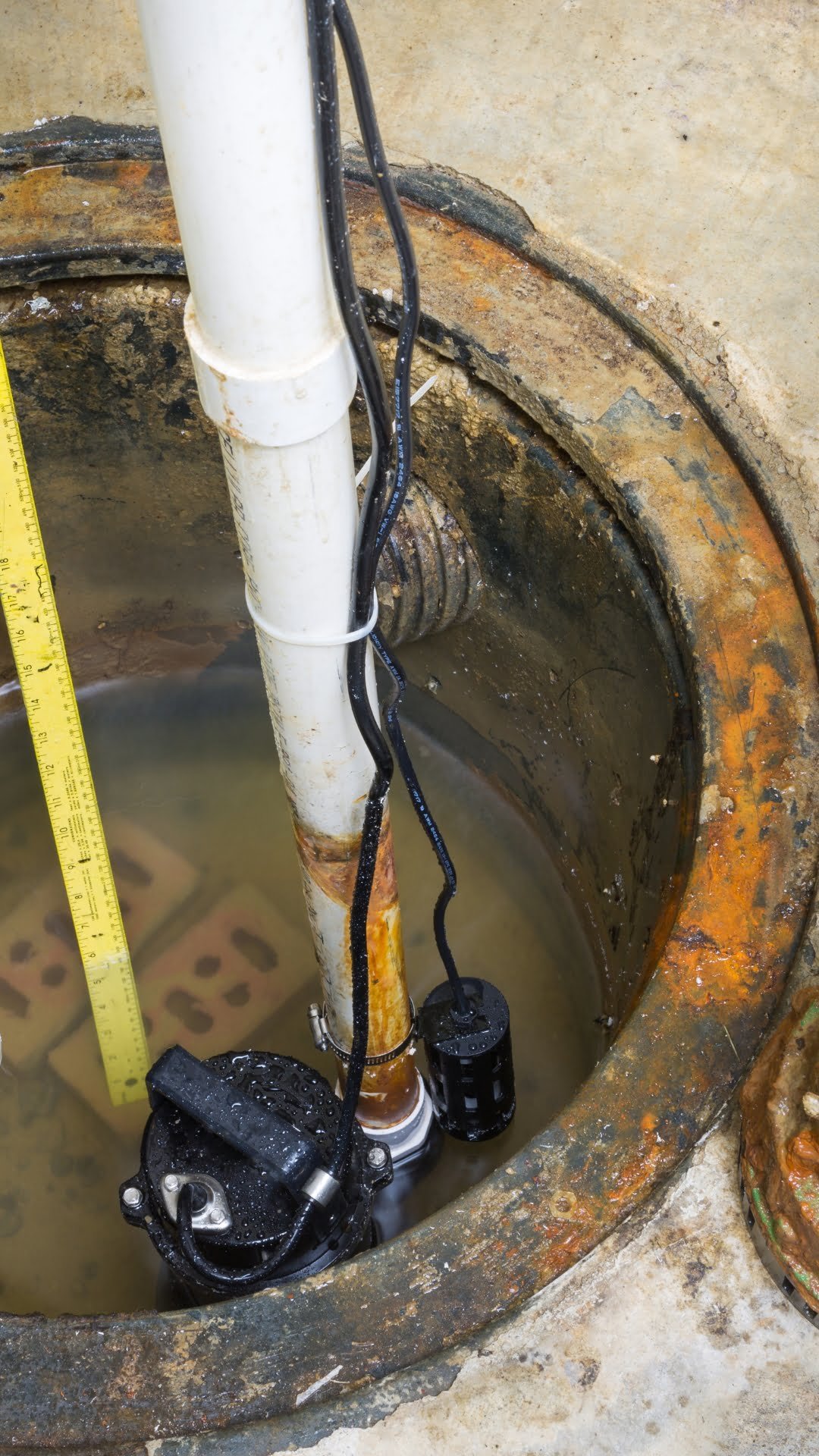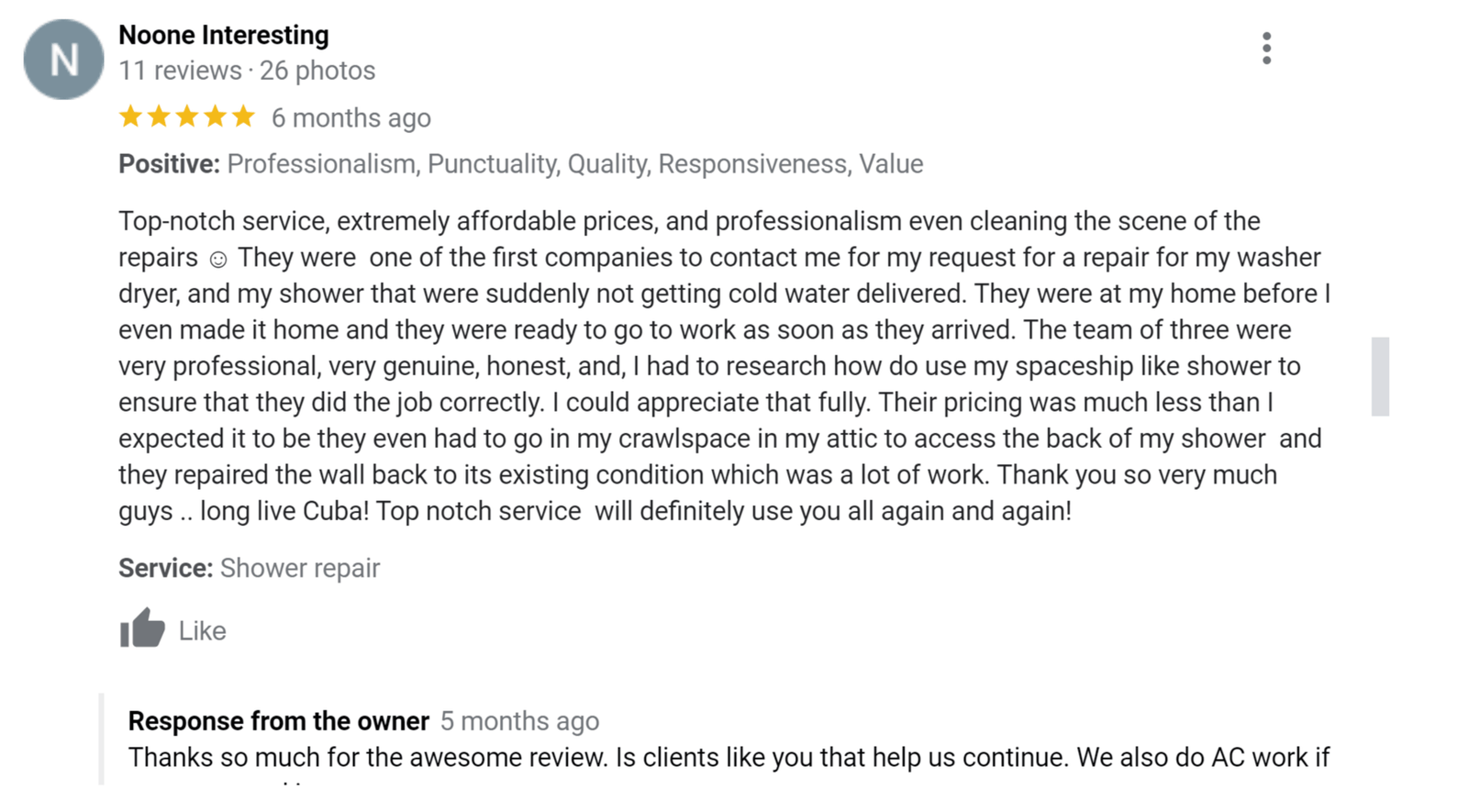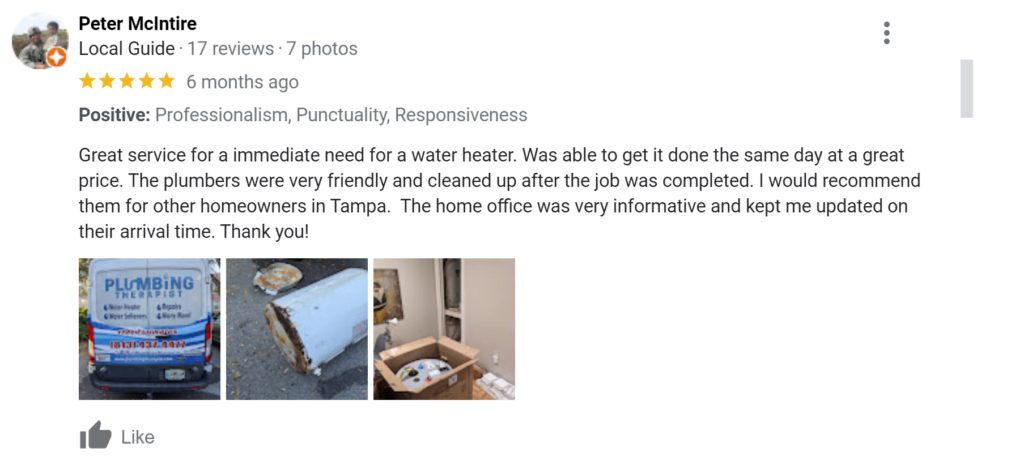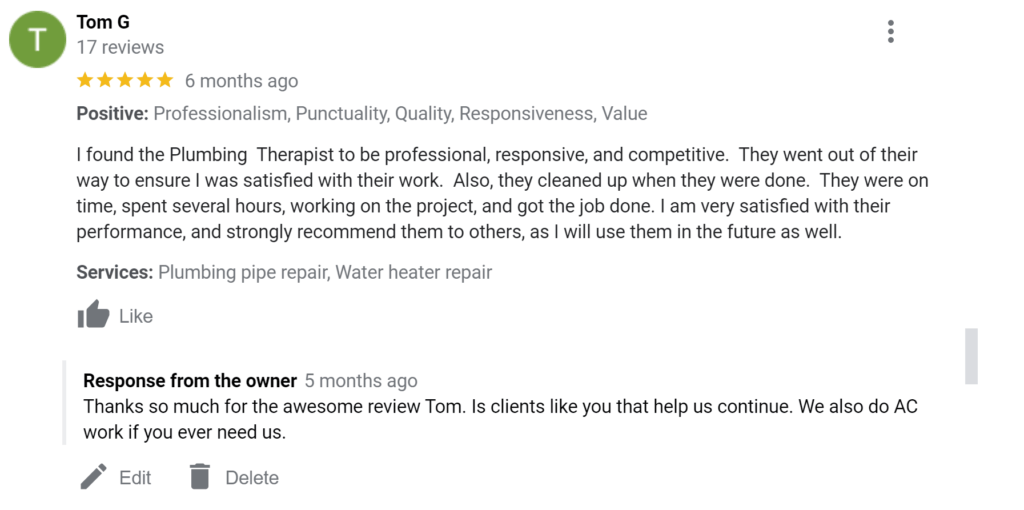Sump Pump Replacement
Choose Plumbing Therapist in Tampa Bay for expert sump pump replacement services. Ensure your home’s safety with our experienced team and quality solutions.
Do You Need Our Help ?
Feel free to contact us now
$99 Water Heater Flush + Free Plumbing System Inspection
Sump Pump Replacement in Tampa Bay
Reliable & Effective Sump Pump Replacement Services in Hillsborough County, Pinellas County, and Pasco County
At Plumbing Therapist, we understand the crucial role a sump pump plays in keeping your home safe and dry. Located in the heart of Tampa Bay, we specialize in providing top-notch sump pump replacement services to ensure your basement stays dry and your peace of mind intact.
Why Choose Plumbing Therapist for Your Sump Pump Replacement?
Expertise and Experience: With years of experience in the plumbing industry, our skilled technicians have the knowledge and expertise to handle any sump pump replacement, regardless of the complexity.
Quality Service: We pride ourselves on delivering high-quality, reliable services. Our team uses the latest tools and technology to ensure your sump pump replacement is done efficiently and effectively.
Customer Satisfaction: At Plumbing Therapist, your satisfaction is our priority. We strive to provide a seamless service experience from start to finish.
Local Understanding: Being a local Tampa Bay company, we have a unique understanding of the area’s plumbing needs and challenges, particularly when it comes to managing water in our often unpredictable Florida weather.
Our Sump Pump Replacement Process
Inspection and Consultation: We start with a thorough inspection of your existing sump pump system to determine the need for replacement.
Selection of the Right Pump: Based on your specific needs and our assessment, we recommend the best sump pump replacement that suits your home and budget.
Efficient Installation: Our team will efficiently install your new sump pump, ensuring it operates correctly and integrates seamlessly with your existing plumbing system.
Testing and Quality Assurance: Post-installation, we conduct rigorous testing to ensure the sump pump functions optimally and provides maximum protection against flooding.
Education and Support: We believe in empowering our clients. Our team will guide you on how to maintain your new sump pump and provide tips for long-term performance.
Contact Us Today
Don’t wait for a flood to think about your sump pump. Contact Plumbing Therapist today for a consultation or to schedule your sump pump replacement. Protect your home with the experts in Tampa Bay.

Why partner with Plumbing Therapist?
Quality, Affordability, and Expertise.

No Hidden or Unexpected Charges

Free Estimates & Online Booking Available

Professionally Trained Technicians

Honesty is Guaranteed

Quick Communication & Service Within 24 Hours

400+ 5 Star Reviews

What are the signs that I need to replace my sump pump?
Recognizing the signs that you need to replace your sump pump is crucial in preventing potential water damage to your home. Here are key indicators that it might be time for a replacement:
Age of the Pump: Sump pumps typically have a lifespan of about 10 years. If yours is approaching or has surpassed this age, it’s wise to consider a replacement.
Frequent Cycling: If the pump is turning on and off more frequently than usual, especially in normal conditions, it could indicate a problem with the pump or the float switch.
Strange Noises: Unusual noises like grinding, rattling, or thumping sounds can be a sign of a failing motor or damaged impeller, both of which warrant a replacement.
Constant Running: If the pump runs continuously, regardless of weather conditions or water levels, this could indicate a problem with the switch or the pump itself.
Visible Rust: Corrosion or rust can be a sign of aging and deterioration, which can lead to pump failure.
Motor Failure: If the pump’s motor has trouble starting or doesn’t start at all, this is a clear sign that it needs replacing.
Intermittent Operation: If the pump doesn’t operate consistently or has intermittent failures, it may be unreliable and need replacement.
Water Damage: If you’ve experienced a flood or water damage despite having a sump pump, this could indicate that the pump is not functioning correctly or is inadequate for your home’s needs.
Slow Operation: A pump that takes longer than usual to remove water might be losing its efficiency and could require replacement.
Power Outages: If your area experiences frequent power outages and your sump pump doesn’t have a battery backup, you might want to replace it with a model that does.
Regular maintenance and timely replacement of your sump pump are key to protecting your home from water damage. If you notice any of these signs, it’s advisable to consult with a professional like Plumbing Therapist for an assessment and potential replacement.
If you would like more information, feel free to give them a call at (813)-437-4477 or you can book online and get their latest discount!
Customer Testimonials: Real Experiences with Plumbing Therapist
We proudly share the experiences and stories of our valued clients. Their feedback provides a glimpse into the quality of service and commitment to excellence we uphold at Plumbing Therapist. You'll read firsthand how our plumbing solutions have improved comfort and efficiency in homes across Tampa Bay. These testimonials illustrate our dedication to customer satisfaction and the difference our expert services can make.




Your questions answered
Common sump pump replacement Questions:
When should a sump pump be replaced?
Replacing a sump pump at the right time is crucial to prevent potential basement flooding and water damage. Here are key indicators and considerations for when a sump pump should be replaced:
Age of the Pump: The average lifespan of a sump pump is typically around 7 to 10 years. If your pump is approaching or has exceeded this age, it’s wise to consider a replacement, even if it hasn’t failed yet, to avoid unexpected breakdowns.
Frequent Cycling: If the pump is turning on and off more frequently than usual, especially under normal water levels, this could indicate a problem with the pump or its components.
Strange Noises: Unusual sounds like grinding, rattling, or thumping can be a sign of motor problems or damaged components, suggesting the pump is nearing the end of its life.
Continuous Operation: A pump that runs continuously, regardless of water levels, may have switch issues or be improperly sized for the pit, indicating a need for replacement.
Intermittent or Irregular Operation: If the pump doesn’t consistently start during high water levels, or if it’s prone to failures, it’s a clear sign that the pump is unreliable and should be replaced.
Visible Rust or Corrosion: Signs of rust or corrosion can indicate deterioration, which can lead to pump failure.
Motor Failure: If the pump’s motor has trouble starting or doesn’t start at all, this is a clear indication that it needs replacing.
Previous Flooding: If your basement has flooded despite having a sump pump, this could mean the pump is not functioning correctly or is inadequate for your home’s needs.
Reduced Efficiency: If the pump seems to be working harder or taking longer to eject water, it may be losing efficiency and nearing the end of its useful life.
Lack of Maintenance: Regular maintenance is key to extending the life of a sump pump. If the pump hasn’t been maintained properly, it may require earlier replacement.
It’s always better to replace your sump pump proactively rather than waiting for a complete failure, which could result in costly water damage. If you’re unsure about the condition of your sump pump, it’s advisable to consult with a professional, like Plumbing Therapist, for an assessment.
What type of sump pump is best for my home?
Choosing the best type of sump pump for your home depends on several factors, including the size of your basement, the amount of water it typically accumulates, and your specific needs. Here are the two main types of sump pumps and their suitability:
Submersible Sump Pumps:
- Description: These pumps are designed to be submerged in the sump pit. They are typically quieter and less obtrusive than pedestal pumps and can handle larger volumes of water and debris without clogging.
- Best For: Homes that experience frequent or heavy water accumulation, larger basements, or finished basements where noise and appearance are concerns. They are also ideal if you need a pump that can handle debris in the water.
Pedestal Sump Pumps:
- Description: These pumps have a motor mounted above the sump, keeping it dry. They are easier to maintain because the motor is more accessible.
- Best For: Smaller basements or crawl spaces with less frequent water issues. They are a good choice if you’re looking for a more cost-effective solution and have a sump pit that is shallow or narrow.
Additional Considerations:
Horsepower: The horsepower needed will depend on the volume of water to be pumped and the height it needs to be lifted (head height). More horsepower might be necessary for higher volumes or greater lifting distances.
Battery Backup: Regardless of the type, consider a sump pump with a battery backup. This is particularly important in areas prone to power outages, as it ensures your basement remains dry even during a blackout.
Switch Type: The switch turns the pump on and off as the water level changes. Tethered floats are suitable for larger pits, while vertical floats are better for smaller pits.
Alarm Systems: Some sump pumps come with alarm systems that alert you when the water reaches a certain level, which can be a useful feature for early detection of potential problems.
Capacity and Head Pressure: Check the pump’s capacity (gallons per minute or hour) and its ability to pump water to a certain height (head pressure), ensuring it meets the requirements of your basement.
Material Quality: Pumps made of cast iron and stainless steel tend to last longer and are more durable than those made of plastic.
Manufacturer and Warranty: Choose a reputable brand and check the warranty terms for added assurance.
Before making a decision, it’s advisable to consult with a professional, like Plumbing Therapist, who can assess your specific situation and recommend the most suitable sump pump for your home. They can consider factors like the size of your basement, the local water table, and your home’s specific plumbing setup.
What are the risks of not replacing a failing sump pump?
Not replacing a failing sump pump can lead to several risks and potential problems, particularly in areas prone to high water levels or flooding. Here are some of the key risks associated with delaying the replacement of a failing sump pump:
Basement Flooding: The most immediate and obvious risk is basement flooding. Without a functioning sump pump, water can accumulate during heavy rains or snow melts, leading to significant flooding in your basement.
Water Damage: Flooding can cause extensive water damage to floors, walls, furniture, and any belongings stored in the basement. This damage can be costly to repair and may lead to the loss of valuable or irreplaceable items.
Mold and Mildew Growth: Moist environments are ideal for the growth of mold and mildew, which can develop quickly in a damp basement. Mold can cause health issues, particularly for those with allergies or respiratory problems, and can also lead to structural damage over time.
Electrical Hazards: Water accumulation in a basement can pose serious electrical hazards, especially if the water level reaches electrical outlets or the home’s electrical system.
Decreased Property Value: Chronic water issues and the presence of mold and mildew can decrease the value of your property. Additionally, potential buyers may be deterred by the lack of a reliable sump pump system.
Increased Insurance Costs: Frequent claims for basement flooding might lead to higher home insurance premiums. In some cases, insurance may not cover damage due to negligence, such as failing to maintain a sump pump.
Pest Infestations: Damp conditions can attract pests like insects and rodents, which can become a nuisance and potentially cause further damage to your property.
Structural Damage: Prolonged exposure to water can weaken the foundation and structural integrity of your home, leading to costly repairs and safety concerns.
Health Risks: Damp and moldy environments can pose health risks, especially for individuals with asthma, allergies, or weakened immune systems.
Inconvenience and Stress: Dealing with the aftermath of a flooded basement, including cleanup, repairs, and insurance claims, can be a significant source of stress and inconvenience.
To avoid these risks, it’s important to regularly maintain your sump pump and replace it when signs of failure are evident. If you’re unsure about the condition of your sump pump, consulting with a professional, such as Plumbing Therapist, can provide peace of mind and ensure your home stays dry and safe.
Are there more efficient or advanced models available?
Yes, there are more efficient and advanced models of sump pumps available on the market, offering enhanced features and capabilities compared to basic models. These advancements can provide better performance, increased reliability, and additional convenience. Here are some key features to look for in modern, advanced sump pumps:
Battery Backup: One of the most important features in areas prone to power outages. A battery backup ensures that the sump pump continues to operate during a power failure, providing continuous protection against flooding.
Higher Horsepower: Advanced models may offer higher horsepower options, which can provide more power to pump water more quickly and efficiently, especially useful in areas with high water tables or significant rain/snow melt.
Smart Technology: Some modern sump pumps are equipped with Wi-Fi connectivity and smart technology, allowing you to monitor and control the pump remotely via a smartphone app. This feature can alert you to potential issues or water levels rising in real-time.
Automatic Operation and Self-Testing: Advanced models often include automatic operation features and can conduct self-tests to ensure they are functioning correctly, providing peace of mind and reducing the need for manual checks.
Improved Switches and Alarms: High-end sump pumps often come with more reliable switch mechanisms and alarms that alert you when the water level is too high or if there are any issues with the pump’s operation.
Energy Efficiency: Newer models are designed to be more energy-efficient, reducing electricity usage while maintaining optimal performance.
Corrosion-Resistant Materials: Advanced sump pumps may use materials that are more resistant to corrosion, such as stainless steel and cast iron, which can extend the life of the pump.
Variable Speed Motors: Some models come with variable speed motors that adjust the speed based on the water level, which can enhance efficiency and reduce wear and tear.
Compact Design: For homes with smaller sump pits, there are advanced models with a more compact design that still provide powerful pumping capabilities.
Combination Units: Some advanced models combine a primary pump and a battery backup pump in one unit, providing a comprehensive solution for basement water control.
When considering an upgrade to a more advanced sump pump model, it’s important to assess your specific needs, such as the typical water volume, the size of your sump pit, and the frequency of power outages in your area. Consulting with a professional, like Plumbing Therapist, can help you determine the best sump pump model for your home, ensuring that you get a reliable and efficient system tailored to your requirements.

